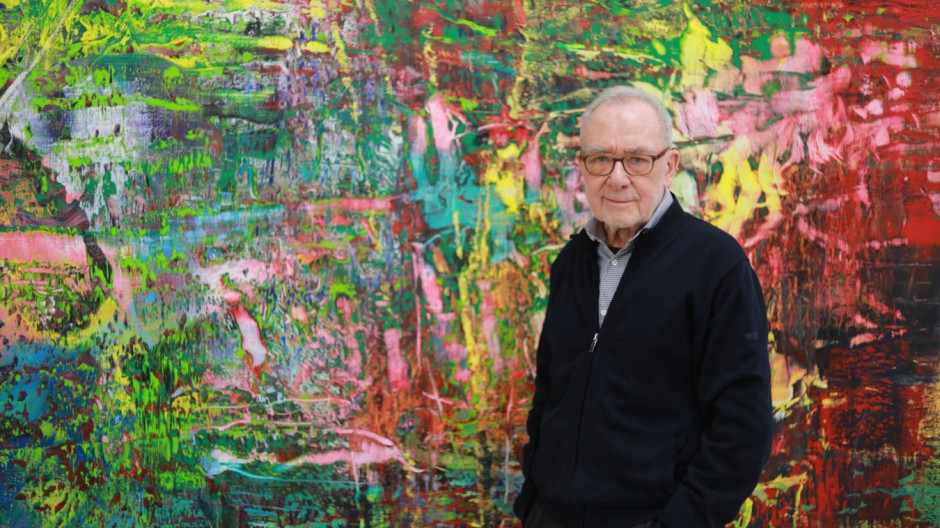
Yet today you would follow these interpretations of the meaning of your work with interest, and say that the motifs were chosen arbitrarily? Everything has a reason, including the selection of the photos, which was not arbitrary but appropriate to the period, its highs and lows and my sense of them.On Pop, East and West, and Some of the Picture Sources.
Uwe M. Schneede in Conversation with Gerhard Richter
Gerhard Richter was born to Horst and Hildegard Richter in Dresden on February 9, 1932. Gerhard was their first child, with a daughter, Gisela, arriving in 1936. Horst was a teacher and Hildegard was a bookseller and a talented pianist. They were a well-read middle-class family.
In 1946, Gerhard Richter’s father was released from the Americans who had captured him as a POW. He returned to his family, who had relocated from Reichenau to the even smaller Waltersdorf, a village on the Czech border. Horst’s reception was not as warm as he might have hoped. Commenting on this many years later, Gerhard explained: “He shared most fathers’ fate at the time… Nobody wanted them.” After working in a textile mill in nearby Zittau his father eventually found a post as an administrator of a distance learning program for an educational institution in Dresden.
Gerhard Richter was a highly gifted child but notoriously bad in school who even brought home poor grades in drawing. He attended a vocational school, where he studied stenography, accounting and Russian. Fortunately, he was just a little too young to have been conscripted to the army himself during the last year of the war. His two uncles died in the war and Gerhard Richter’s aunt Marianne was starved to death in a psychiatric clinic due the eugenics policies of the Third Reich who did not tolerate anyone deemed to have “mental issues.”
Gerhard remembered quite a lot of the war: “The retreating German soldiers, the convoys, the low-flying Russian planes shooting at refugees, the trenches, the weapons lying around everywhere, artillery, broken down cars. Then the invasions of the Russians […] the ransacking, rapes, a huge camp where us kids sometimes got barley soup.”14
The end of World War II in many ways coincided with Gerhard’s transition from childhood to adolescence, and, now under Soviet control following the Potsdam Agreement, it was to be a very different Germany to the one he had been born into.
In February 1950 he was taken on as an assistant set painter for the municipal theatre in Zittau for the sets for productions including Goethe’s Faust and Schiller’s William Tell among others. After a short time as a State Employee Gerhard Richter returned to his birth city of Dresden in the summer of 1951, ready to begin his formal studies to be a painter.
He enjoyed his studies at the Academy but was disturbed by the ever increasing